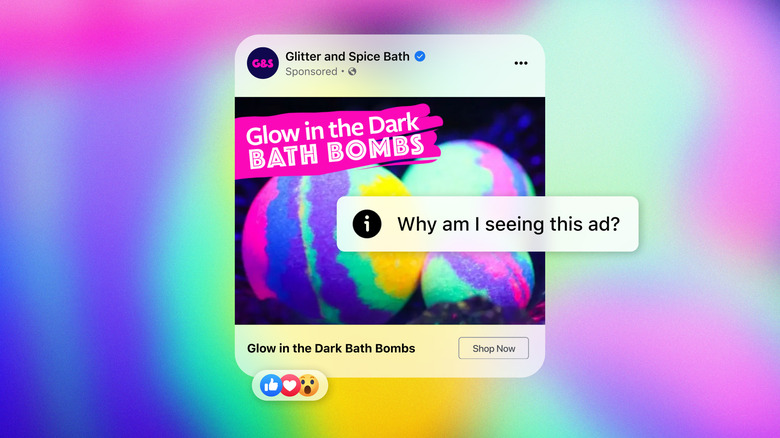Facebook Will Tell You How It Uses AI To Determine What Ads You See
If you've wondered why you are seeing an ad in your Facebook feed, Meta is looking to bring more transparency to that.
In a blog post, Meta announced that it is rolling out the new version of its "Why am I seeing this ad?" tool for Facebook. According to the post, the new version of the tool will include more transparency about how the company uses machine learning to determine what ads you see on the social media platform.
The company says that the tool is being updated today with the following:
- Information summarized into topics about how your activity both on and off our technologies — such as liking a post on a friend's Facebook page or interacting with your favorite sports website — may inform the machine learning models we use to shape and deliver the ads you see.
- New examples and illustrations explaining how our machine learning models connect various topics to show you relevant ads.
- More ways to find our ads controls. You will now be able to access Ads Preferences from additional pages in the "Why am I seeing this ad?" tool.
Pedro Pavón, Meta's Global Director of Ads and Monetization Privacy, said in the post that the company "worked closely with external privacy experts and policy stakeholders from around the world to get input on what transparency changes they want to see in our ads system" and that led to the additional transparency about how machine learning influences ad placement.
Pavón says that the company is "committed to using machine learning models responsibly. Being transparent about how we use machine learning is essential because it ensures that people are aware that this technology is a part of our ads system and that they know the types of information it is using. By stepping up our transparency around how our machine learning models work to deliver ads, we aim to help people feel more secure and increase our accountability."
The news comes about a month after the company announced further limitations on how advertisers could target teenagers on the platform. We'll see if that applies to Horizon Worlds, which the company apparently wants to flood with teens to boost usage.
